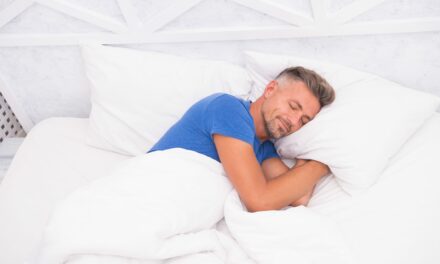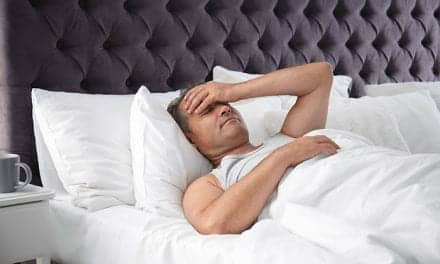Typically reserved to test the waters for patients who can’t afford a custom device, temporary oral appliances are having a moment.
By Lisa Spear
Patients who have obstructive sleep apnea may be leery of positive airway pressure therapy while the coronavirus continues to be transmitted in the United States, due to the risk of spreading the virus to others via aerosolization, says Nancy Addy, DDS, president of the American Academy of Dental Sleep Medicine (AADSM). They may also worry about not having access to distilled water for CPAP humidification, she says. Oral appliance therapy for sleep apnea circumvents these challenges, but safer-at-home orders mean dental sleep medicine practitioners may be challenged to get the bite impressions needed for the creation of custom appliances.
As a way forward, some providers have found a solution in temporary oral appliances. These interim therapy devices have historically been used when patients are waiting for a more permanent device or if they can’t afford a custom device, but some clinicians think these short-term devices could fill a bigger role in patient care while people continue to practice social distancing—particularly since most interim oral appliances can be fitted remotely.
An interim oral appliance can be mailed directly to the patient. Within a few minutes the patient can self-titrate the device, in many cases without having to leave their home. It is a tool that sleep specialists in California at Kaiser Permanente San Bernadino County Sleep Center have used for years to manage certain patients. Kaiser Permanente patients are guided by a respiratory therapist over a video call on how to fit the oral appliance appropriately.
“Theoretically, you could have it ready nearly instantaneously,” says Dennis Hwang, MD, director of Kaiser Permanente San Bernadino County Sleep Center. “We are big believers that oral appliance therapy can be an excellent therapy for select patients, and my feeling is that it will grow over time.”
During the first weeks of the pandemic, sleep therapy manufacturer Airway Management Inc saw its custom oral appliance business slow to a crawl, but the company also saw new interest in the myTAP, its temporary oral appliance that patients can adjust at home.
“Everything else went very quiet for us,” says Charles Collins, CEO of Airway Management.
Temporary oral appliances might have a shorter lifespan than their permanent counterparts, but they get the job done for as long as six months. Since they are less expensive, these temporary devices also offer a way for patients to test out if oral appliances are right for them without making a big investment, though different models have different predictive statistics.
“We use temporary oral appliances for patients when we are not sure if they are going to respond to an oral appliance. Other times, the patient is not sure if they want to commit the effort or the money to obtaining an oral appliance,” says Hwang. Patients may also want an alternative option to CPAP for when they travel or for when they go camping.
This moment in history may present an opportunity for physicians to partner with dentists to meet the demand of sleep apnea care as local governments ease restrictions on businesses.
“Physicians will continue to be burdened with COVID-19 long after states begin to reopen, and qualified dentists are ready and willing to help manage care for their patients with sleep apnea,” says Addy.
“Many aspects of dental sleep medicine are conducive to telehealth. Dental sleep medicine requires less invasive, [less] aerosol-generating procedures than general dentistry.”
Not everyone will be eligible for this therapy. Patients who have dental disease, loose teeth, or who have had significant dental work, should avoid oral appliance therapy.
According to Collins, CEO of Airway Management, the myTAP setup is simple. The patient boils the device in water before inserting it into their mouth. It takes about four minutes to cool and hold its shape on the teeth. Depending on the patient’s dental arch, the tray size can be expanded. If the fit isn’t right, the patient can reheat it and the original shape will return.
“They can refit it until they get the perfect, comfortable, retentive balance,” says Collins. “The patient has the ability to self-titrate at home, so you can really dial into that sweet spot of where it is comfortable and it is effective and the patient has control over that.”
Before the telehealth visit, the Kaiser office will send patients some educational material about oral appliances and what to expect from the device.
After the patient receives their device, a member of the care team follows up with a video call to ask the patient questions about their experience with the therapy. Then a disposable home sleep test, the WatchPAT One, is sent to the patient to gather data on the efficacy of the therapy. The metrics are uploaded wirelessly to a HIPAA-secured cloud platform, where the physicians can compare it to the patient’s baseline diagnostic sleep study, says Dara Vega, RN, RRT, RPSGT, ambulatory service supervisor at Kaiser Permanente San Bernardino Sleep Center.
To ensure the device lasts as long as possible, Vega advises that patients should avoid using caustic cleaners. Also, in the case of myTAP, the prong at the front of that is used to adjust the fit should be handled with care.
These temporary devices are just one tool that the providers at the San Bernadino County sleep center are using as part of their telemedicine practice. “The pandemic has really made a major impact in terms of forcing us to reimagine all of our workflows. In order to protect our patients and in order to protect our staff we went to a completely remote and virtual care,” says Hwang. “We realize that this might be a long-term process and this might be the new normal. This virus is something that is going to be in our communities, it is going to be in our populations for a very long time.”
Lisa Spear is associate editor of Sleep Review.





